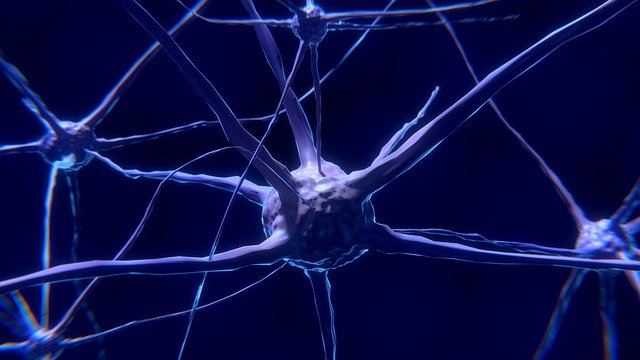Duchenne Muscular Dystrophy Therapies
Duchenne muscular dystrophy (DMD) is a severe form of muscular dystrophy caused by a rare genetic disease that primarily affects boys. DMD is caused by a genetic mutation that prevents an individual from producing dystrophin, a protein that is essential for muscles to work properly. Without dystrophin, muscle cells weaken, and the body is unable to repair any damage that affects the muscle. Symptoms of DMD first appear around the age of four and worsen quickly, forcing most boys to use a wheelchair by the age of twelve. DMD is a progressive disease, thus, over time the muscles needed for breathing and pumping the heart will eventually stop working. There is currently no cure for DMD although many therapeutic treatments are currently being investigated.
One therapeutic treatment currently being tested in canine models is expected to one day improve muscle cells in patients. This therapy attempts to repair dystrophin genes using CRISPR/Cas9, a genome-editing tool, which is delivered using an adeno-associated virus (AAV). The CRISPR/Cas9 system can bind to specific deoxyribonucleic acid (DNA) sequences and cause predictable targeted changes to the DNA sequences. This is the most promising therapeutic treatment because it can specifically target the nucleotides that are added to the system, delete them, restore the reading frame, and allow correct mRNA translation. In other words, it can help fix mutated DNA and allow it to work properly.
One therapeutic treatment currently being tested in canine models is expected to one day improve muscle cells in patients. This therapy attempts to repair dystrophin genes using CRISPR/Cas9, a genome-editing tool, which is delivered using an adeno-associated virus (AAV). The CRISPR/Cas9 system can bind to specific deoxyribonucleic acid (DNA) sequences and cause predictable targeted changes to the DNA sequences. This is the most promising therapeutic treatment because it can specifically target the nucleotides that are added to the system, delete them, restore the reading frame, and allow correct mRNA translation. In other words, it can help fix mutated DNA and allow it to work properly.
Image Source: MasterTux
Currently, CRISPR/Cas9 therapies for DMD are still very theoretical because it is a relatively new technology. In addition, the size of the AAV makes it difficult to deliver the large CRISPR/Cas9 system to all the cells in the body. The treatment may also have to be redelivered about every ten years, given that it works in the patient. There is also no guarantee as to whether the body will correctly respond to the CRISPR/Cas9 treatment—the DNA may get repaired correctly or another mistake may be introduced to the genome.
Notably, Leonela Amoasii and colleagues found that after systemic delivery of CRISPR gene-editing components to the skeletal muscle of canine models, dystrophin was restored to levels ranging from 3 to 90%, depending on the type of muscle. After receiving the highest treatment dose, dystrophin levels in the canine model were restored up to 92%. These results provided evidence that the CRISPR/Cas9 gene-editing system could prove clinically useful in the treatment of DMD patients.
Beyond the discovery of these experimental therapies, it should be noted that current therapies and resources to provide both physical and emotional support for patients with DMD are extremely costly. In addition, it is essential to raise awareness for the lack of accessibility options for patients diagnosed with DMD—this speaks to a larger accessibility issue in the United States. For example, Darius Weems, a young disability rights activist, dedicated his life to highlighting this gross inequality in accessibility in his documentary Darius Goes West. Thus, it is not only important that new therapeutic treatments are found to treat DMD but also to highlight the intersection of DMD with other obstacles that patients have to face, including accessibility for individuals with disabilities.
Notably, Leonela Amoasii and colleagues found that after systemic delivery of CRISPR gene-editing components to the skeletal muscle of canine models, dystrophin was restored to levels ranging from 3 to 90%, depending on the type of muscle. After receiving the highest treatment dose, dystrophin levels in the canine model were restored up to 92%. These results provided evidence that the CRISPR/Cas9 gene-editing system could prove clinically useful in the treatment of DMD patients.
Beyond the discovery of these experimental therapies, it should be noted that current therapies and resources to provide both physical and emotional support for patients with DMD are extremely costly. In addition, it is essential to raise awareness for the lack of accessibility options for patients diagnosed with DMD—this speaks to a larger accessibility issue in the United States. For example, Darius Weems, a young disability rights activist, dedicated his life to highlighting this gross inequality in accessibility in his documentary Darius Goes West. Thus, it is not only important that new therapeutic treatments are found to treat DMD but also to highlight the intersection of DMD with other obstacles that patients have to face, including accessibility for individuals with disabilities.
Featured Image Source: stevepb
RELATED ARTICLES
|
Vertical Divider
|
Vertical Divider
|
Vertical Divider
|






